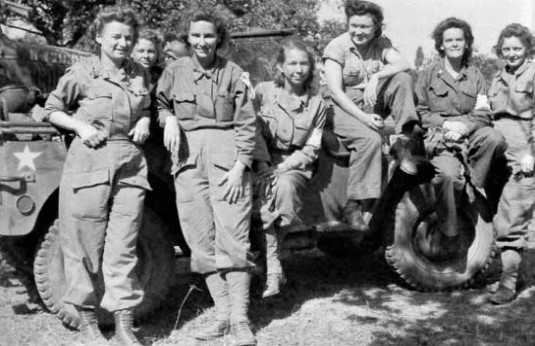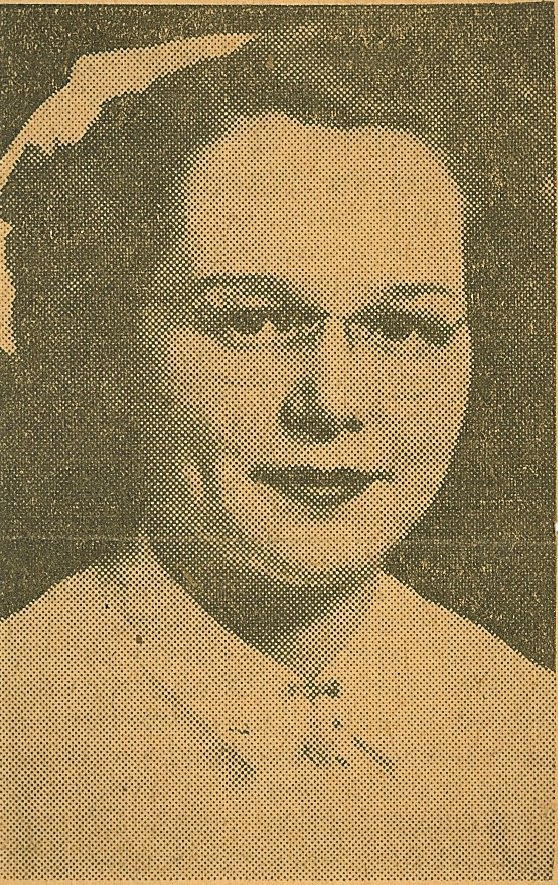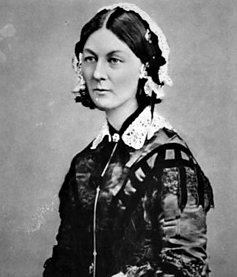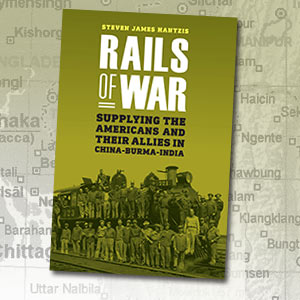Ladies with Lamps
Over 59,000 women served in the U.S. Army Nurse Corps during World War II. Thousands more, like Mary Louise Hantzis, R.N., my mother, cared for war-wounded in the States. Mary worked with a noted orthopedic surgeon in Indianapolis and saw war-torn bodies on every round. For Veterans Day 2021, I offer this vignette, an origin story of her profession.

December 1853—French Battleship Charlemagne—Constantinople Harbor, Turkey
Northwestern squalls bore the sulfuric tail of tanneries and south-westerlies reeked of abattoir coppery effluence. The weather blew in circles and from every direction, it stank of dead meat. Pelting rain was all that kept Pierre-Yves from nauseating embarrassment. The icy sting braced him, standing watch on the bridge deck. Morning skies were as gray as the waves and if the sun had risen, Pierre-Yves was not a witness. Thankfully, two charcoal caustic plumes from the ship’s stacks fell astern in her ten-knot advance. Charlemagne’s 368 feet of laden armored decking rocked and wallowed on a sea sent from the devil below. Pierre-Yves fought the list and heave to maintain his watch on the Russian shore batteries.
Pierre-Yves wasn’t the only one who thought this deployment stupid. He wished he were home on his family’s farm near Artignosc sur Verdon tending to honeybees and olive trees. “Ah,” he thought, “It is the time of year for hunting the boars. This miserable trip was the work of fools. Ten minefields we have already sailed. Heaven is the weather in the south of France compared with the god-forsaken Bosporus.
“Parle à mon cul, ma tête est malade!” he grunted under his breath in frustration. [Stop bothering me!]
Other junior officers thought as he did, all faithful Catholics with the French prerogative of skepticism. A skepticism alive and well on this dubious expedition.
Pierre-Yves was a bright, lucky boy from a privileged family. He worked hard at the Université de Paris-Sorbonne to earn his degree in Nautical Engineering. As a patriotic Frenchman, he enlisted in the service of his country upon graduation and held the rank of lieutenant in the French Navy.
He spent late nights at the Sorbonne discussing philosophy, art, women, and religion. He was Catholic by birth and faith. But he could not fathom how a trivial matter, squabbling monks, justified sending an armada and thousands of men across the Mediterranean into hostile waters.
“All for what?” he asked himself. “To stymie Russians for a Greek misdemeanor supported by the Tsar? C’est plus qu’un crime, c’est une faute!” [It is worse than a crime, it is a blunder!]
“Over what?” he asked in silent monologue. “The keys to a church and a silver star?”
He visualized a pair of Greek Orthodox monks in tall hats and long gray beards slinking into the Church of the Nativity in the middle of the night. He smirked. He shook his head and rain flung from the double bills of his Napoleon hat.
In his visualization, now in full career, two fat buffoons kneeled on the marble, prying the fourteen-point silver star embedded in the ancient iron-stained grotto. He saw the Latin inscription, which he knew by heart, Hic de Virgine Maria Jesus Christus natus est. [Here Jesus Christ was born to the Virgin Mary.]
He imagined the simpletons secreting the prize under their robes and scurrying back to their monastery like burglars, common thieves. The monks’ motivations were mysterious. Rescue of the sacred symbol from the Catholics? Whatever they were thinking, whatever their crime, it wasn’t worth killing for, or being killed for.
“Hell, let the Greeks run the grotto. It doesn’t change the faith of those who believe and worship,” he muttered in exasperation.
“À cause de rien,” he thought. [For no reason.] “Now, France must sail to the rescue and restore the luminary for the honor of church and country? This is folly. Men should never put religion above reason. Not in affairs of state. When both religions pray to the same God? Orthodox or Catholic, what’s the difference? The direction in which they sign the cross?”
He raised the dripping brass telescope to his eye and scanned the Russian batteries. As he focused, a Latin phrase came to him from his late-night critiques at the Sorbonne, “Credo quia absurdum est.” [I believe it because it is absurd.]

Pierre-Yves was right. The Crimean War was absurd and deadly. Thieving monks were not the casus belli, although politicians presented it that way. The war arose from commerce and geography, with religion sprinkled atop for mass consumption.
The big players were France, Britain, and Turkey against Russia. From late 1853 to early 1856, half a million men fought and died and twice as many civilians starved or died from disease. Conscripted soldiers abandoned family farms and industrial centers in Europe. On the continent, food grew scarce and famine’s fellow travelers, typhus, and malnutrition reaped thousands. At the front, France, Britain, and Turkey lost 70,000 killed in battle and 183,000 to disease. Russia lost 256,000 evenly split between battle and disease. But the dialectic that Pierre-Yves studied so intently at the Sorbonne held. Amid misery, carnage, and senseless bloodletting arose beauty, art, and human betterment.
Because of the war, the United States purchased Alaska from Russia for a song. Russia, unhappy with the inferior quality of Alaskan furs, needed to keep the U.S. from entering the war on the side of her enemies. She offered our forty-ninth state for $7.2 million.
And, in early November 1854, a lithe, thirty-four-year-old woman with a kind, determined face arrived at the British Barrack Hospital in Scutari, Turkey, today’s Üsküdar. There on the Asian shore of the Bosporus, she gazed at the Blue Mosque, St. Sophia, and Topkapi Palace in clear view from the peninsula of Stamboul. Opulence played hard against the grisly toil of endless caregiving, horror, and desperate improvisation.

With her traveled thirty-eight women recruited from the safe confines of Western Europe. She trained them in sanitation and statistics and how to care for the injured and sick. She established her triage haven with little support from the military and active resistance from male doctors and orderlies. Then, at the battle of Inkerman, the women’s angelic custody of casualties transformed the medical profession. At night, amid moans and the stench of bloody bandaging, Florence Nightingale walked the aisles of cots at Scutari. She held a lamp aloft to guide her way and reassure the wounded.
Florence Nightingale invented and invested modern professional nursing. I, for one, am grateful. For had she not, my mother would have had to find other work, the same for my Aunt Pearl, Aunt Dorothy, and my niece, Kara.
A Lady with a lamp shall stand.
In the great history of the land,
A noble type of good,
Heroic Womanhood.
‘Santa Filomena’ by Henry Wadsworth Longfellow, 1857
‑SJH





